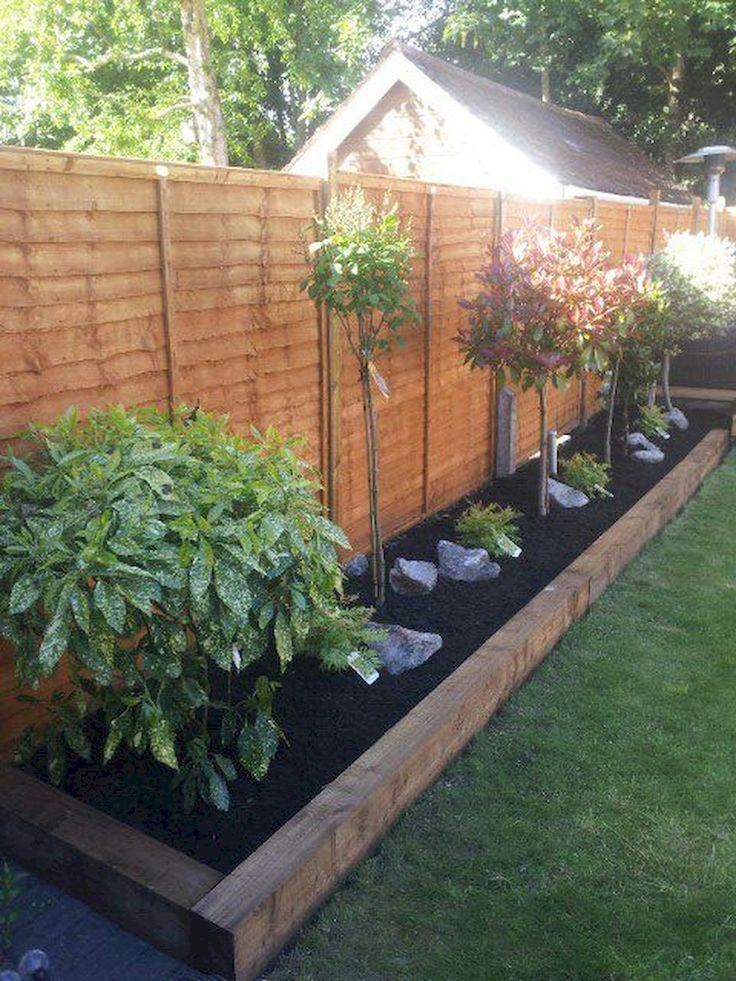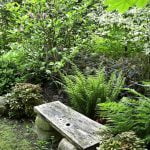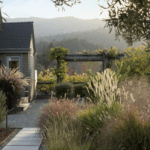Design ideas for small gardens offer a multitude of possibilities for transforming limited outdoor spaces into beautiful, functional retreats. From maximizing available space to choosing the right plants and incorporating practical elements, there are numerous strategies for creating a stunning garden in a small area.
Small gardens present unique challenges and opportunities for design. While limited space may seem restrictive, it also encourages creativity and innovation in designing a visually appealing and functional outdoor oasis. With careful planning and strategic implementation, even the smallest of gardens can become a breathtaking escape.
In this article, we will explore various design ideas and techniques for cultivating small gardens. From thoughtful layout planning to creative use of vertical space and DIY projects, these ideas will inspire you to make the most of your compact outdoor area. Whether you’re working with a balcony, courtyard, or tiny yard, these tips and tricks will help you transform your small space into a thriving green haven.
Planning for Small Garden Spaces
Designing a small garden can present some challenges, but with the right techniques and creativity, it can also offer numerous opportunities for a beautiful and functional outdoor space. When planning for small garden spaces, it’s essential to maximize the available space and create a layout that makes the most of every inch. Here are some tips for achieving this:
- Utilize vertical space: Consider adding trellises, hanging planters, or wall-mounted shelves to grow herbs, succulents, or small flowers. This not only adds greenery but also frees up valuable ground space.
- Choose furniture wisely: Opt for foldable or stackable outdoor furniture to save space when not in use. Additionally, consider multifunctional pieces such as benches with built-in storage or tables that double as planters.
- Create defined areas: Divide your small garden into distinct zones for dining, lounging, and gardening. This helps give the illusion of a larger space and makes the most efficient use of the area.
- Use containers strategically: Opt for containers of varying sizes to add depth and dimension to your garden. Group them together in clusters or arrange them along paths to create visual interest.
When designing a layout for a small garden, it’s all about making smart choices and thinking creatively about how to maximize what you have. By implementing these design ideas for small gardens, you can transform even the tiniest outdoor space into a charming and inviting oasis. With careful planning and thoughtful execution, you can make the most out of your limited area while still enjoying all the benefits a garden has to offer.
Creative Use of Vertical Space
When it comes to designing small gardens, one of the most effective strategies is to make use of vertical space. By utilizing walls, trellises, and hanging planters, you can add a lush greenery and functional elements to your garden without taking up precious horizontal space.
Vertical Planting
Vertical planting is a great way to maximize space in a small garden. Consider installing wall-mounted planters or creating a living wall with a variety of plants. This not only adds visual interest but also helps to purify the air and create a sense of tranquility in your outdoor oasis.
Trellises and Arbors
Trellises and arbors are not only decorative but also serve as support for climbing plants such as vines, roses, or clematis. They can be used to create privacy screens or define different areas within your garden. Additionally, they add height and dimension, making the garden feel larger than it actually is.
Hanging Planters
Hanging planters are perfect for small gardens as they free up floor space and add a touch of whimsy to the design. You can hang them from pergolas, tree branches, or even install hooks on the exterior walls of your home. Consider planting herbs or trailing flowers in these planters for both beauty and functionality.
By incorporating these vertical elements into your small garden design, you can create an enchanting green space that feels larger and more dynamic than its actual size. With creativity and ingenuity, you can transform any compact outdoor area into a thriving oasis that reflects your personal style and love for nature.
Choosing the Right Plants
When it comes to designing a small garden, choosing the right plants is crucial in maximizing the space and creating a visually appealing and functional outdoor oasis. Here are some design ideas for small gardens to highlight low-maintenance, space-saving plants, and clever ways to incorporate them:
- Vertical Gardens: Utilize vertical space by growing climbing plants such as ivy, jasmine, or clematis on trellises or walls. This not only adds greenery but also creates a beautiful backdrop for your small garden.
- Succulent Gardens: Succulents are perfect for small gardens as they require minimal watering and maintenance. Create a stunning succulent garden in a shallow planter or even in a vertical wall-mounted frame for a unique and space-saving display.
- Herb Spiral: Design an herb spiral using rocks or bricks to create multiple planting levels within a compact area. This not only saves space but also allows for a variety of herbs to be grown in one small area.
Incorporating low-maintenance and space-saving plants not only ensures that your small garden remains manageable but also adds beauty and charm to your outdoor space. Consider the specific light and water requirements of each plant when selecting them for your small garden, ensuring they thrive in their limited environment. By carefully choosing the right plants, you can transform your small garden into a lush and inviting retreat.
Remember that containers, raised beds, and hanging planters can also be utilized to make the most of limited space while showcasing an array of beautiful flowers, shrubs, and vegetables. With these design ideas for small gardens in mind, you can create an aesthetically pleasing outdoor haven with carefully selected plants that suit the scale of your space.
Incorporating Functional Elements
When it comes to designing a small garden, every square inch counts. To make the most of the limited space available, it’s important to carefully consider the practical features that can complement the design and enhance the functionality of the garden. This section will discuss various ways to incorporate seating, storage, and lighting into small garden spaces, providing ideas and inspiration for maximizing their potential.
Seating in a small garden serves not only as a place to relax and enjoy the surroundings but also as a design element. When space is at a premium, built-in benches or foldable furniture can be great options for providing seating without taking up too much room. Additionally, creating cozy nooks or corners with seating arrangements can add charm and functionality to a small garden.
Storage is another essential component in small gardens, as it helps keep the space organized and clutter-free. Utilizing vertical shelving, hidden storage compartments within planters or benches, and hanging organizers are some ingenious ways to incorporate storage without sacrificing precious space. By integrating storage solutions seamlessly into the design, the garden can remain visually appealing while still being highly functional.
In terms of lighting, strategic placement of fixtures can transform a small garden into an enchanting oasis at night. From string lights above seating areas to solar-powered pathway lights along walkways, there are numerous options for adding illumination without overcrowding the space. Thoughtfully designed lighting not only creates ambiance but also extends the usability of the garden into the evening hours.
| Functional Element | Ideas for Incorporation |
|---|---|
| Seating | Built-in benches, foldable furniture, cozy nooks |
| Storage | Vertical shelving, hidden compartments within planters or benches, hanging organizers |
| Lighting | String lights above seating areas, solar-powered pathway lights |
Creating Illusions of Space
When working with a small garden space, the challenge lies in making it appear larger than it actually is. However, with careful planning and strategic design, it’s possible to create the illusion of a larger, more expansive garden. By employing specific techniques that play with color, depth, and perspective, you can visually enlarge your garden and make it feel more open and spacious.
Color
One of the most effective ways to create the illusion of space in a small garden is through the use of color. Lighter colors such as white, pastels, and soft neutrals can make a space feel more open and airy. Consider painting fences or walls in light shades to visually expand the boundaries of your garden. Additionally, using a monochromatic color scheme for your plants can create a sense of continuity and openness.
Depth
Incorporating varying levels of height and depth in your small garden can also contribute to its visual enlargement. Introduce raised beds or terraced areas to add dimension and create visual interest. Utilize different layers of plants, foliage, and textures to draw the eye upward and outward. By adding depth to your garden design, you can give the impression of more space within the limited area.
Perspective
Strategic design elements that lead the eye towards a focal point or draw attention away from boundaries can help alter perspective in a small garden. A winding path or meandering walkway can create intrigue and lengthen the view within the space. Incorporating mirrors or reflective surfaces can also add depth and trick the eye into perceiving an extended area. By playing with perspective in your design, you can make your small garden feel more expansive and inviting.
By implementing these techniques for creating illusions of space through color, depth, and perspective, you can transform your compact outdoor area into a visually stunning retreat that feels much larger than its physical dimensions might suggest. These thoughtful design ideas for small gardens will undoubtedly enhance both the aesthetic appeal and functionality of your limited outdoor space.
DIY Projects for Small Gardens
When it comes to designing a small garden, DIY projects can be especially useful in maximizing the limited space available. Custom-built planters, raised beds, and other space-saving solutions not only add functionality but also allow for a personalized touch in the garden design. From repurposing materials to constructing innovative structures, there are countless design ideas for small gardens that can elevate the outdoor space.
One popular DIY project for small gardens is building custom-built planters. These can be tailored to fit specific areas of the garden and can even be designed to accommodate vertical planting for added greenery without taking up much ground space. Additionally, raised beds are an excellent way to create defined gardening areas within a small space while also providing better drainage and soil quality.
Another great space-saving solution for small gardens is creating vertical planters using recycled materials like pallets or PVC pipes. These vertical structures not only add visual interest to the garden but also maximize planting area without sacrificing precious ground space. Moreover, they allow for easy access and maintenance of the plants.
Incorporating these DIY projects into the design of a small garden not only adds practicality but also allows for creativity and customization. By making use of custom-built planters, raised beds, and other space-saving solutions, individuals can make the most of their limited outdoor spaces while cultivating beautiful and functional gardens.
| DIY Project | Description |
|---|---|
| Custom-Built Planters | Tailored to fit specific areas of the garden; accommodates vertical planting; personalized touch |
| Raised Beds | Creates defined gardening areas in small spaces; provides better drainage and soil quality |
| Vertical Planters Using Recycled Materials | Maximizes planting area without sacrificing ground space; allows easy access and maintenance of plants |
Maintenance and Care Tips
Maintaining a small garden can be a rewarding experience, but it requires careful attention to ensure that the space stays beautiful and functional. With thoughtful planning and regular maintenance, you can keep your small garden flourishing. Here are some maintenance and care tips to help you sustain the beauty and functionality of your limited space garden.
One important aspect of maintaining a small garden is regular watering and soil care. Because the space is limited, it’s essential to keep the soil healthy to support the growth of your plants. Consider using a drip irrigation system or self-watering planters to ensure that your plants receive adequate moisture without wasting water. Additionally, regularly check the soil for compactness and nutrient levels, and consider using organic fertilizers to promote healthy growth.
Another crucial aspect of caring for a small garden is keeping pests and diseases at bay. In a confined space, pest infestations or diseases can quickly spread and wreak havoc on your plants. Keep an eye out for any signs of trouble, such as yellowing leaves or unusual spots, and take prompt action to address the issue. Consider using natural remedies or companion planting techniques to deter pests in a safe and eco-friendly manner.
Lastly, maintaining the overall aesthetics of your small garden is essential for its long-term appeal. Regularly prune your plants and remove any dead or dying foliage to keep the space looking neat and vibrant. Additionally, consider refreshing the design with seasonal flowers or changing up decorative elements to keep the space visually interesting. By consistently tending to these aspects of maintenance and care, you can ensure that your small garden remains a delightful oasis despite its limited size.
Conclusion
In conclusion, designing a small garden comes with its own set of challenges, but also presents countless opportunities for creativity and innovation. By carefully planning the layout, considering the use of vertical space, choosing the right plants, incorporating functional elements, creating illusions of space, and embracing do-it-yourself projects, individuals can transform even the tiniest outdoor areas into lush and functional green spaces.
These design ideas for small gardens provide a roadmap for maximizing limited space and turning it into a beautiful and practical oasis.
With thoughtful consideration and strategic design choices, small gardens can become not only visually appealing but also highly functional. By incorporating seating, storage solutions, and lighting into the layout, homeowners can create a multi-purpose outdoor retreat that maximizes every inch of space available. Additionally, careful plant selection and DIY projects can add layers of depth and interest to the garden while ensuring that maintenance is manageable.
Ultimately, cultivating a small garden requires an open mind and willingness to think outside the box. As with any design project, there are countless ways to approach it, so homeowners should feel encouraged to experiment with different strategies in order to find what works best for their specific needs. With these design ideas for small gardens as inspiration, anyone can transform their compact outdoor spaces into thriving havens that they can enjoy year-round.
Frequently Asked Questions
How Do I Design a Small Garden?
When designing a small garden, it’s important to think about the space available and the specific needs and preferences of the plants you want to include. Consider using vertical gardening techniques, choosing smaller plants, and incorporating raised beds or containers to maximize space.
How Do You Arrange Plants in a Small Garden?
Arranging plants in a small garden requires careful planning to ensure that they have enough room to grow without overcrowding. Start by considering each plant’s size, light and water requirements, and how they will look together visually. Group plants with similar needs together and consider using layers or different levels to make the most of the space.
What Is a Good Layout for a Vegetable Garden?
A good layout for a vegetable garden depends on factors such as the available space, sunlight exposure, soil quality, and your own preferences. One popular layout is the traditional row method, which organizes crops in straight lines or rows with easy access for planting, weeding, and harvesting.
Another option is the raised bed method, which provides better drainage and easier maintenance compared to traditional in-ground gardens. Ultimately, the best layout for your vegetable garden will depend on your unique circumstances and goals for your garden.

Welcome to my gardening blog! I am passionate about plants and enjoy sharing my knowledge and experiences with others. In this blog, I will write about everything related to gardening, from tips on how to get started to updates on my own garden projects.





